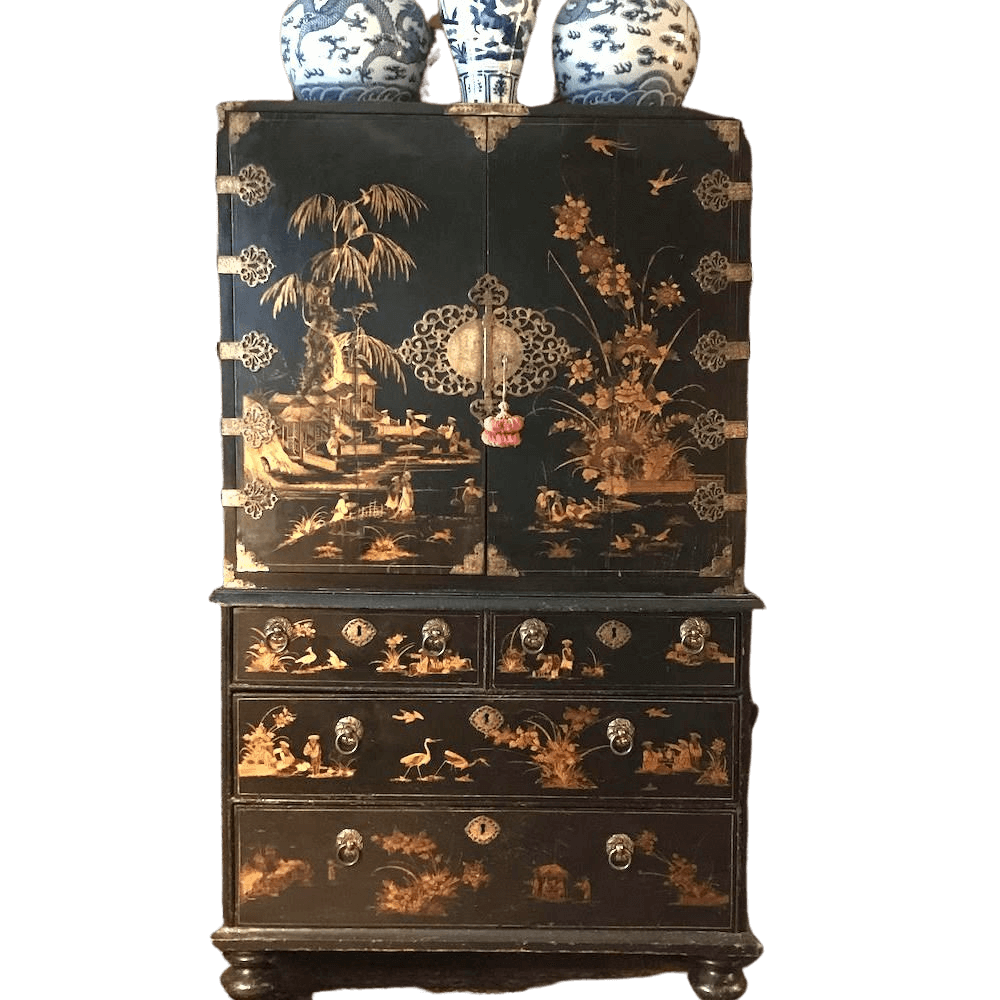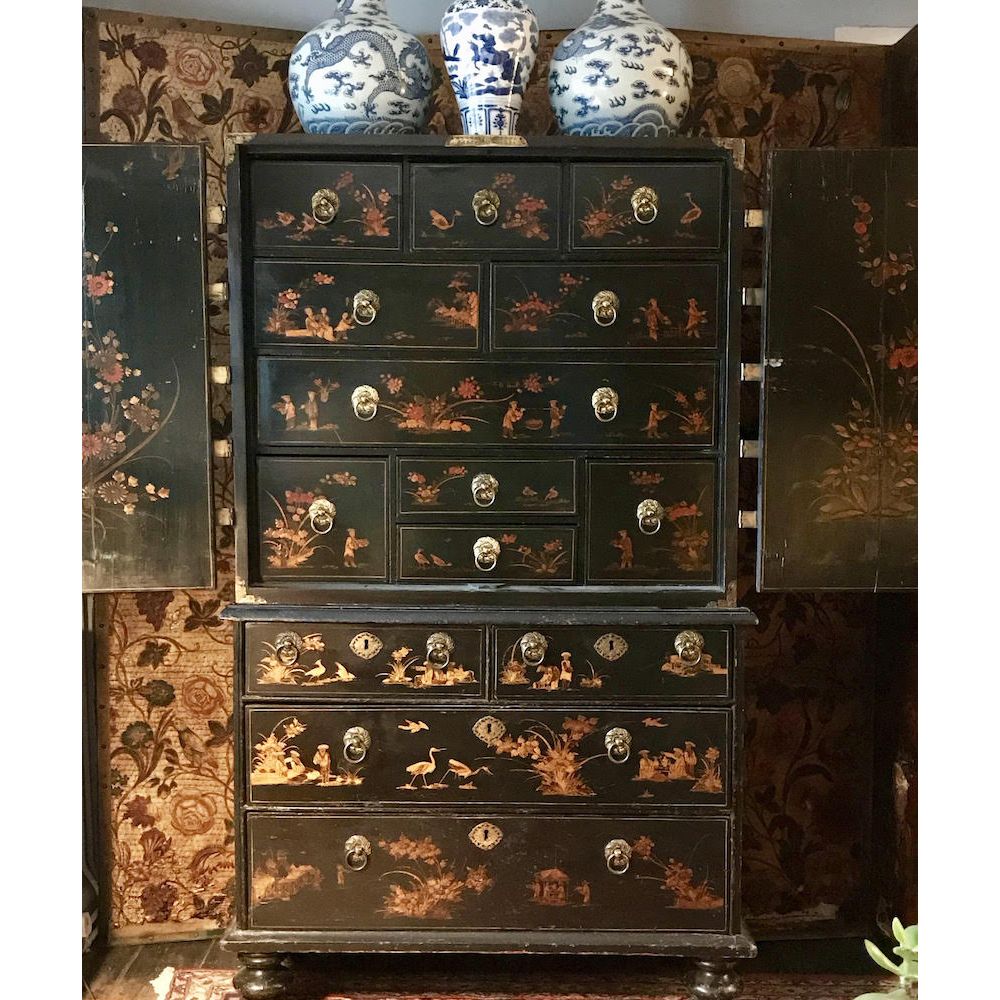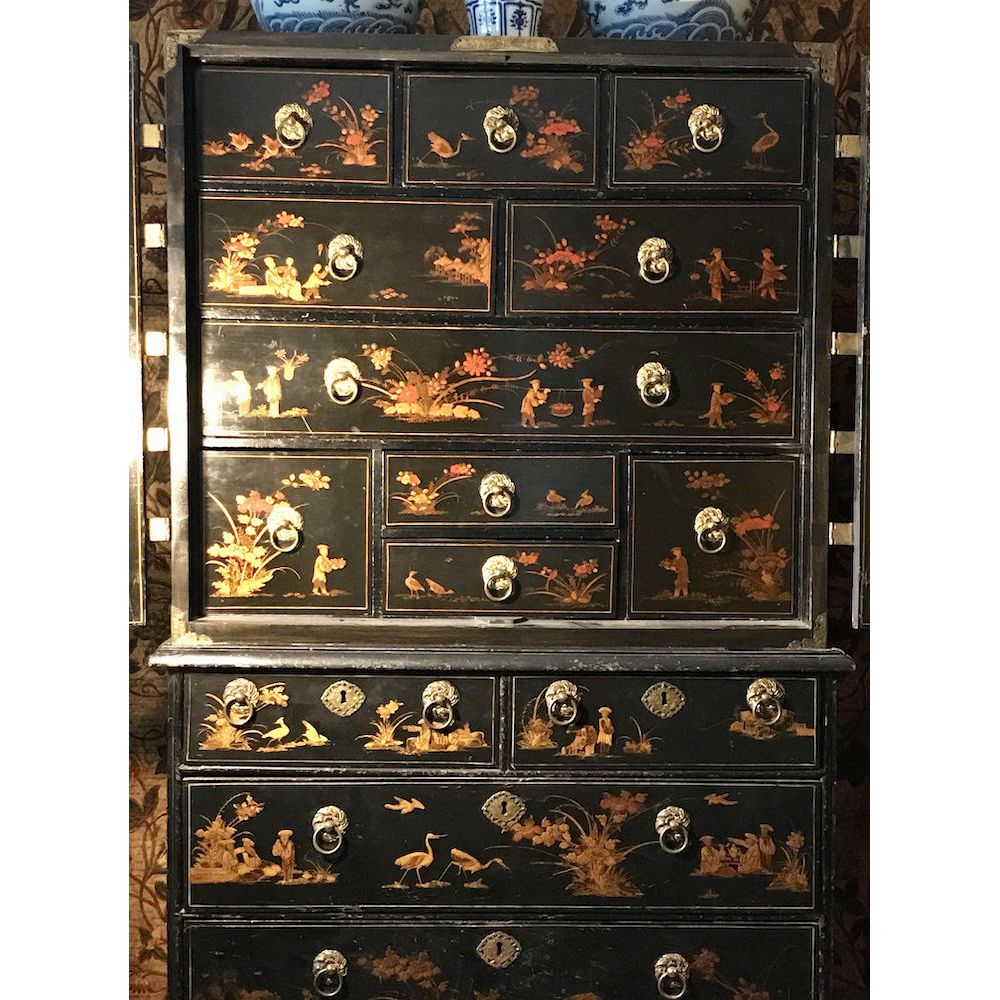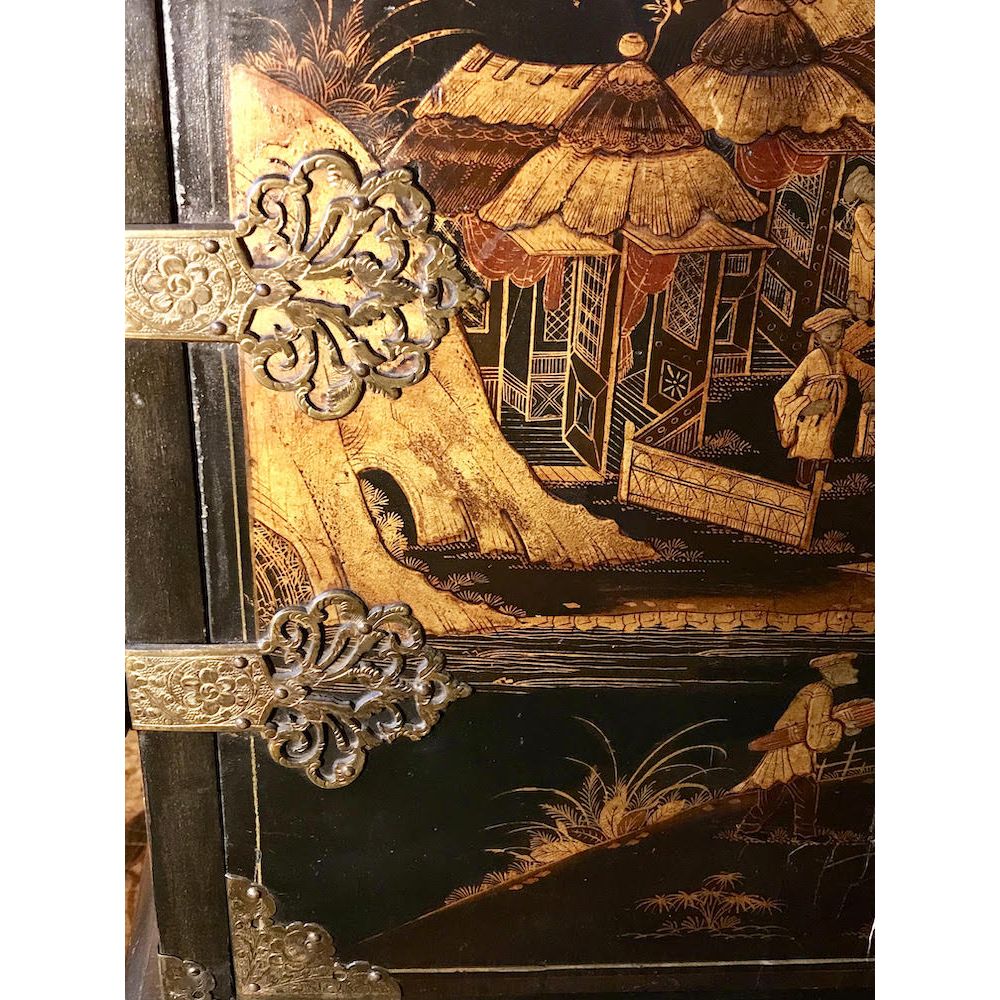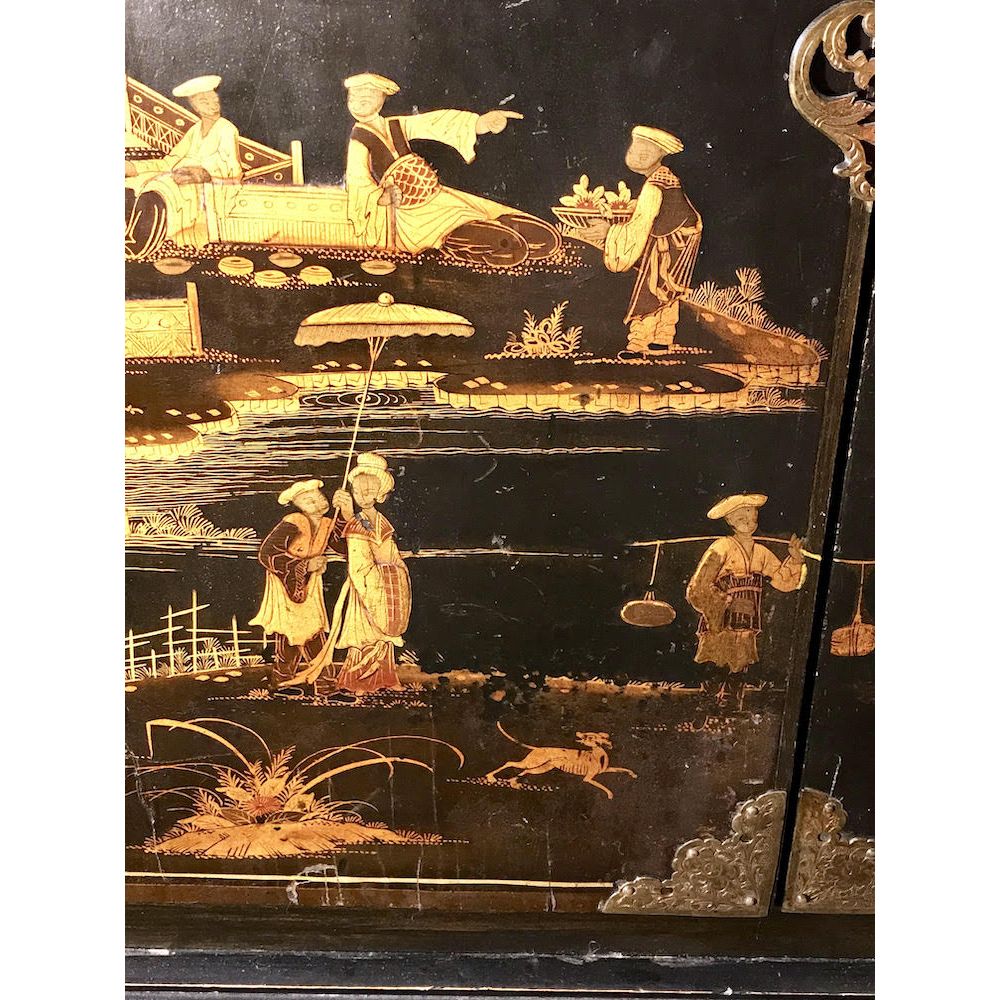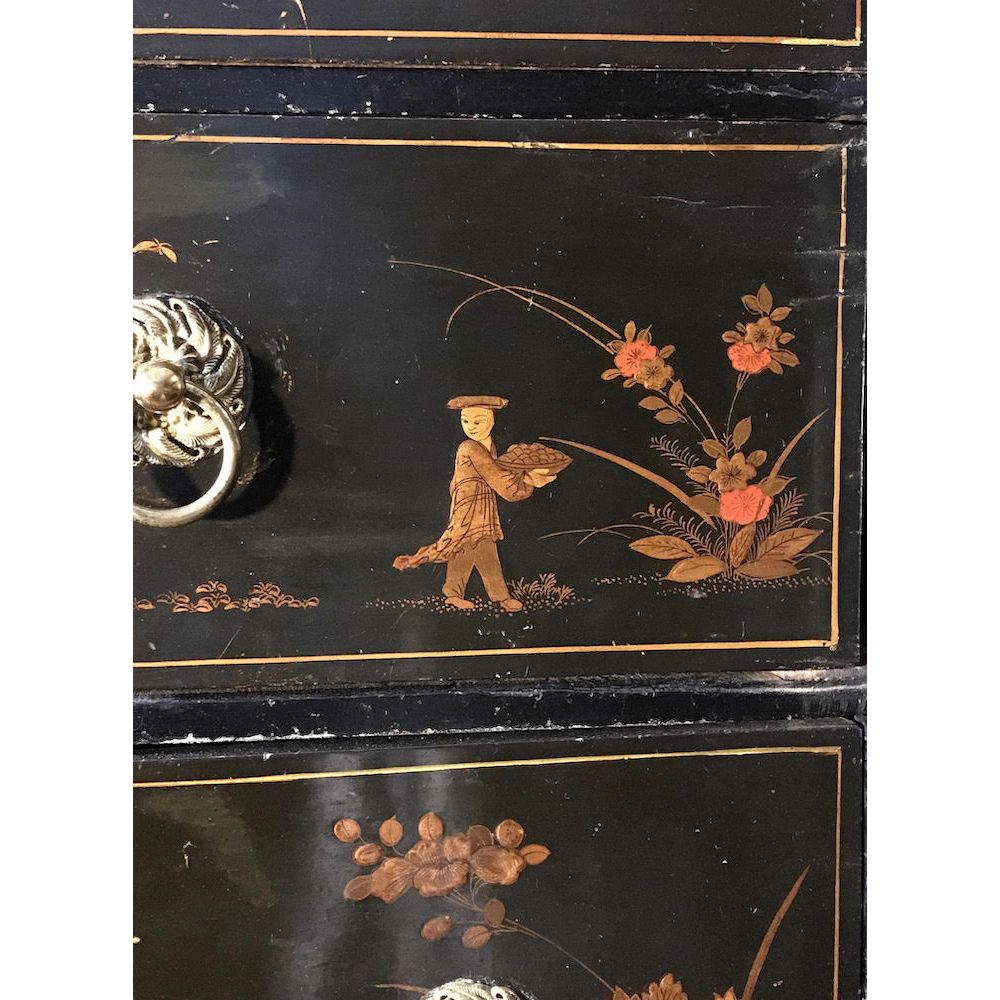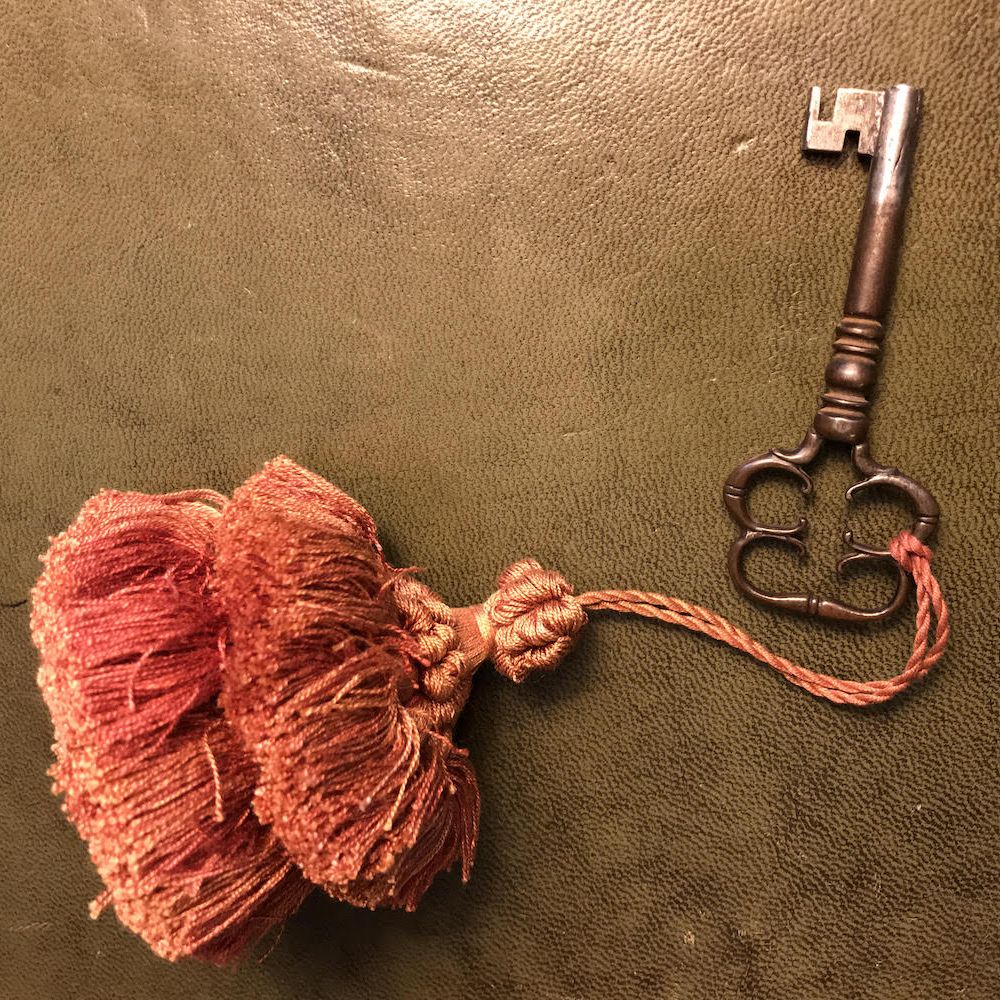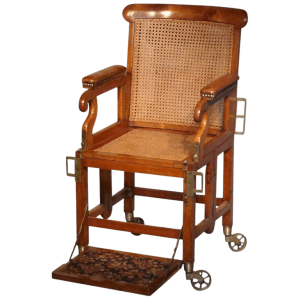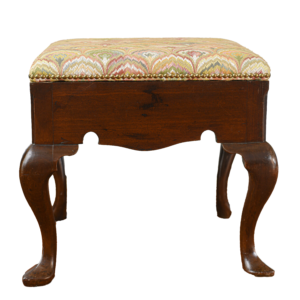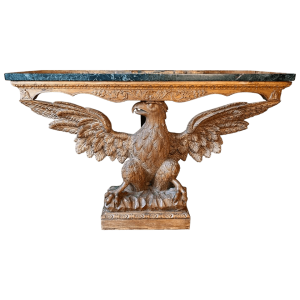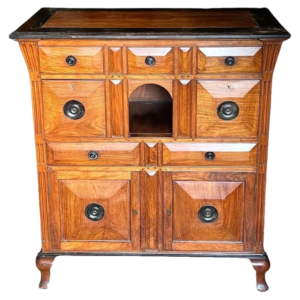Description
An exceptional late 17th century English japanned/ ‘lacquer’ cabinet.
William & Mary period, ca. 1690.
The top section having doors with finely engraved shaped filigree gilt hinges and lock plates, enclosing an arrangement of fitted drawers. The base with two short and two long drawers.
The remarkably original raised gilt decoration showing chinoiserie figures occupied in various pursuits within pavilions, rockwork, gardens, animals, birds and flowers, all well executed in the ‘Chinese’ manner, as interpreted by a skilled English artist of the period.
Also note this interior is original and intact, which is quite rare for this type of cabinet. A converted interior dramatically lowers value.
Nb. This sophisticated antique cabinet is offered in as found ‘country house’ condition. It demonstrates a typically domestic interpretation of the ‘India Taste’ – the height of fashion in the late 17th & early 18th centuries – revealing a charming approach to the subject by those in England who had heard tantalising tales of amazing sights and exotic wares on offer in the Far East.
The applied half round mouldings to the drawer dividers help date this cabinet.
Nb. ‘Japanning’ is often confused with ‘lacquering’, see lit. below:
Ref:
‘The Shorter Dictionary of English Furniture’, Ralph Edwards CBE, FSA, Hamlyn publ., London, 4th impression 1972, p.94, ill. 11, p. 96, ill. 15 & 16, & p. 97, ills. 17 & 19.
Lit:
The development of English black japanning 1620-1820 …
www.vam.ac.uk/…/the-development-of-english-black-japanning-1620-1820
Plate CLXXXIX from the 1762 third edition of ‘Designs for …
thechippendalesociety.co.uk/wp-content/uploads/NLET-134-lowres.pdf · PDF file
Note Chinoiseries vis a vis Stalker and Parker’s famous treatise on Japanning (1688)
Chinoiserie
https://en.wikipedia.org/wiki/Chinoiserie



